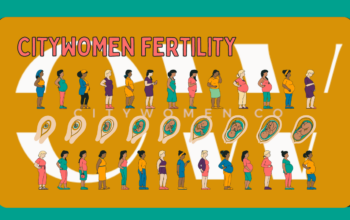
February 12, 2020 at 01:00AM by CWC
Last month, plant-based protein company Quorn became the first major brand to introduce carbon labeling on its products. The brand asked a third-party company to evaluate the emissions impact of 30 of their products—information that it’s publishing on its site and on the packaging of these products. The goal is to help consumers understand the environmental impact of their food shopping.
Certainly more people are considering where their food is coming from—and how that affects the planet—but a carbon footprint label is certainly a new thing for most people. Questions about what the number on the packaging means, how it’s calculated, and even if it’s authentic are all worth considering. After all, brands haven’t been shy about deliberately confusing consumers into buying products in the past. (Exhibit A: Splitting up different sources of sugar on the label so they are lower on the ingredients list.)
Here, sustainability experts give the full low-down on how a food carbon footprint is calculated and what to keep in mind when grocery shopping, in terms of sustainability.
How is a food carbon footprint calculated?
ADVERTISEMENT
ADVERTISEMENTKate Spade Autumn/Winter Sale |
In simplest terms, a food carbon footprint calculates the total greenhouse gas emissions generated to create a particular item. “To calculate a carbon footprint for a food product, you need to total the sum of the greenhouse gas emissions produced or used throughout the product’s entire lifecycle, including production, distribution, use, and disposal,” says Laura Timlin, the director of business services at the Carbon Trust, an independent organization that helps brands and companies lower their carbon emissions. This is a type of life cycle analysis, which calculates a product’s total impact on the environment (including greenhouse gas emissions).
Timlin says doing these type of calculations is super complex. Factors including the removal of forest to create farm land, the energy needed to heat greenhouses, greenhouse gases produced when making the packaging, transportation, are all included in a carbon footprint assessment. “We refer to it as ‘cradle to grave,’” says Christoph Meinrenken, an associate research scientist at Columbia University’s Earth Institute, who has been working in the carbon footprint space for over a decade.
Meinrenken uses potato chips as an example. “First, you want to look at how those potatoes were grown and what fertilizer was used. Then, you need to consider how they were transported. Then, there’s the cooking of the potatoes and the process of turning them into chips. You also have to consider where the other ingredients are coming from and how they are being used. There’s also the packaging and the transportation distribution process to the stores.”
All of this data is calculated to create the carbon dioxide-equivalent emissions (CO2-e) number. For example, Quorn Crispy Nuggets has a carbon footprint of 2.2 kg CO2-e/kg. That means that for every kilogram of Quorn Crispy Nuggets that is produced, 2.2 kilograms of carbon dioxide-equivalent emissions are produced.
Why more brands are calculating their food carbon footprint
Committing to these calculations—and sharing them with consumers—is a big step. Ben Sussna, the head of marketing for Quorn U.S., says the company has employees dedicated solely to it. “Our goal is really for consumers to think more about how their food purchases are impacting the environment,” he says. “In taking this step, we hope it pushes other brands to do it, too. We hope in 10 years that having a carbon footprint label is just as common as having the nutritional panel.”
While Quorn is the first to include a carbon label on their products, they’re not the only brand exploring it. Ten years ago, Meinrenken says his research group worked in partnership with The Carbon Trust to help PepsiCo calculate the carbon footprint of some of their snack and beverage products. “Eventually, it wasn’t something they were putting on their packaging yet—because, honestly, the public awareness just wasn’t there—but they still wanted to know what the carbon footprint of their was so they were aware of it as a company and could make respective improvements, such as investing in alternative fertilizers to grow the oranges for their Tropicana juice.”
He adds that in recent years, Beyond Meat, Impossible Foods, and Ben & Jerry’s have all crunched their carbon numbers (or, more accurately, paid an outside firm to do it for them), which they use in marketing materials. Beyond Meat, for example, worked with the University of Michigan on its life cycle analysis and found that the Beyond Burger uses 99 percent less water, 93 percent less land, and generates 90 percent fewer greenhouse gases than a conventional beef burger.
The best way to know that a brand’s carbon footprint calculation is accurate, says Martin Heller, PhD, a research specialist at the Center for Sustainable Systems at the University of Michigan, is to see if they worked with a third party, like The Carbon Trust, to validate their numbers. “There’s no official certification, but they should have a third party make sure their methods are complete and satisfactory,” he says.
What to keep in mind when food shopping now
Obviously most food products don’t have carbon footprint labels, so comparing numbers and going for the lowest one isn’t a reality that shoppers can do yet. But Dr. Heller says there are a few general tips you can keep in mind if you want to prioritize sustainable eating. “These are very broad generalizations and there are always going to be exceptions, but we know that one of the biggest differences is between buying animal-based foods and plant-based foods,” he says. This is because not only of all the greenhouse gases created in feeding, raising, and manufacturing, but also in creating land to farm them.
“Beyond that, fruits and vegetables that are grown in a heated greenhouse releases carbon during the heating process, so it’s better to buy in-season fruit, and buying it locally, if you can,” Dr. Heller adds. In the same vein, refrigerated and frozen foods also create emissions.
Timlin, of The Carbon Trust, says that processed foods nearly always have a higher carbon footprint than minimally processed or unprocessed foods, and also emphasizes the environmental benefits of buying locally, in-season foods. She also recommends not only buying in bulk, but cooking in bulk, to reduce carbon emissions that happen during the cooking process.
The experts interviewed for this article all say the hope isn’t for consumers to get too hung up on carbon footprint calculations (other decisions go into food buying, of course). What’s important is just being more aware of how food choices affect the planet. Maybe one day everything at the supermarket will have a carbon footprint label and you’ll be able to more accurately compare them. Until then, there’s always the farmers’ market.
ADVERTISEMENT
ADVERTISEMENTSports Direct Free Delivery on All Orders! |
Something else that’s good for the planet: cooking with scraps. And here’s a look at what four sustainability experts consider and buy when they go food shopping.
Author Emily Laurence | Well and Good
Selected by CWC

ADVERTISEMENT
ADVERTISEMENTUp to 30% off Gift Sets |







